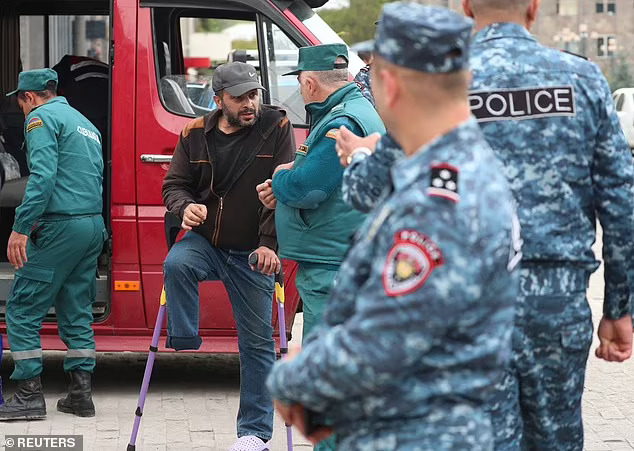Fayez Hoda, Pune
In a rapid exodus driven by fears of ethnic cleansing, thousands have fled from the contested Nagorno-Karabakh region, officially recognized as part of Azerbaijan, seeking refuge in neighboring Armenia. Over the course of just two days, since the Armenian government began accepting refugees on Sunday, nearly 6,700 people have arrived.
Armenian PM Nikol Pashinyan revealed the country’s intentions to accommodate up to 40,000 refugees but expressed grave concerns that as many as 120,000 individuals could be forced to leave the region due to the looming threat of ethnic cleansing. The influx has raised significant questions about Armenia’s capacity to manage such a massive humanitarian crisis.
The central square of Goris, Armenia, has become a bustling hub as refugees seek shelter and assistance. The nearby theater has been repurposed as a base for the Red Cross, which is playing a crucial role in providing aid.
Dr. Tatiana Oganesyan, leading a foundation of doctors and volunteers aiding refugees in Goris, shared heartbreaking accounts of the refugees’ condition. She explained that those arriving at medical facilities are often physically exhausted, malnourished, and grappling with severe psychological distress. She says, “People are shocked, they are telling us: I need pills, they are blue.” Doctors then have to figure out their medication and find it for them.
The Nagorno-Karabakh conflict, a protracted dispute centered on the ethnically Armenian-majority breakaway region, has ignited two wars between Armenia and Azerbaijan over the past three decades. The flight of refugees from Nagorno-Karabakh follows Azerbaijan’s swift military campaign initiated on September 19th. This campaign, characterized as an “anti-terrorist” operation, led to the surrender of separatist forces in the ethnically Armenian region. Tragically, this military escalation resulted in a death toll of at least 200 people, with over 400 individuals sustaining injuries. The Nagorno-Karabakh region has been a longstanding focal point of conflict in the region, with tensions simmering for decades.
While the Armenian government has announced that hundreds of refugees have already been provided with government-funded housing, it has yet to unveil a comprehensive plan to address the growing influx of displaced individuals. Prime Minister Pashinyan previously stated plans to accommodate up to 40,000 refugees, and Armenians have expressed their willingness to open their homes to those in need.
